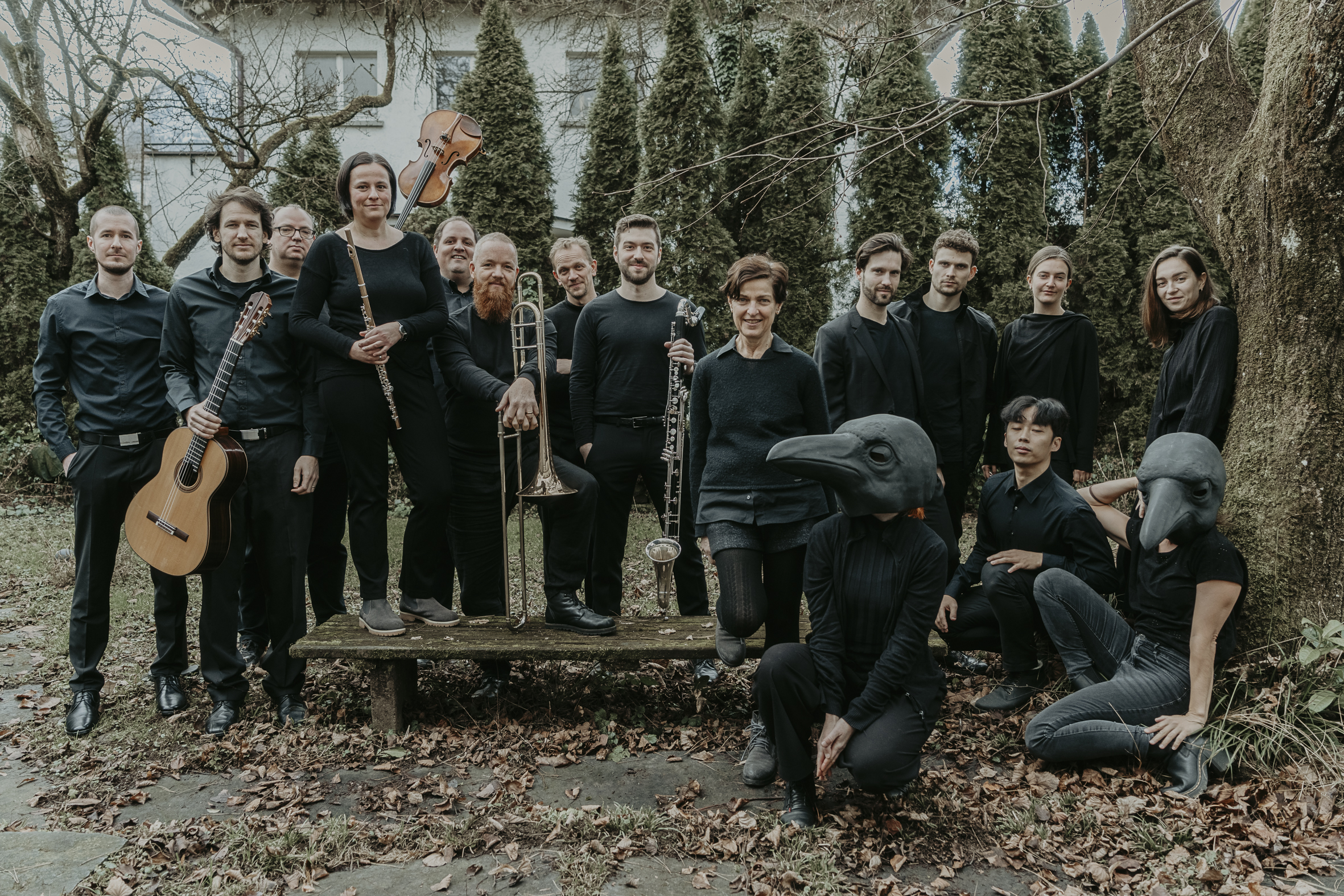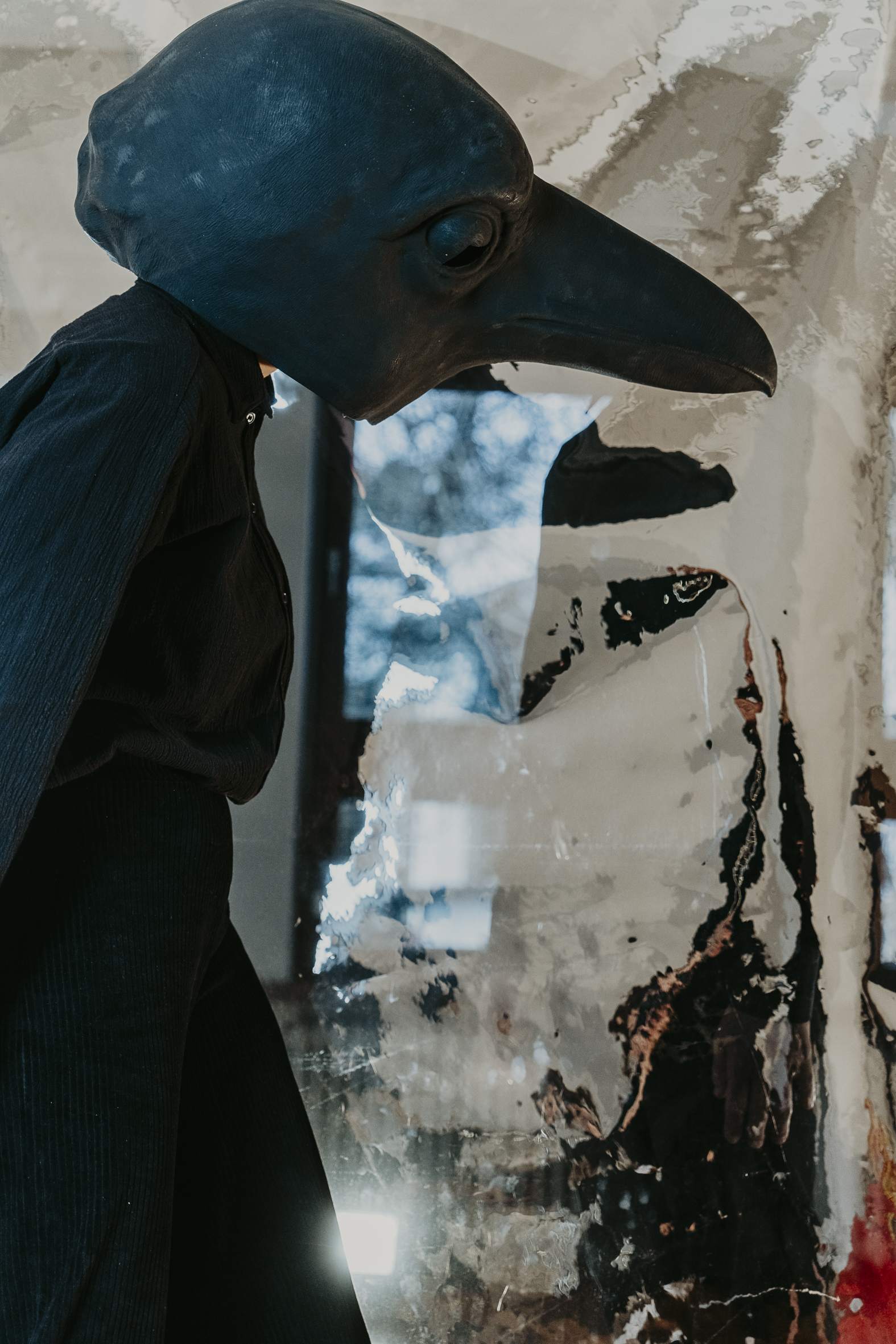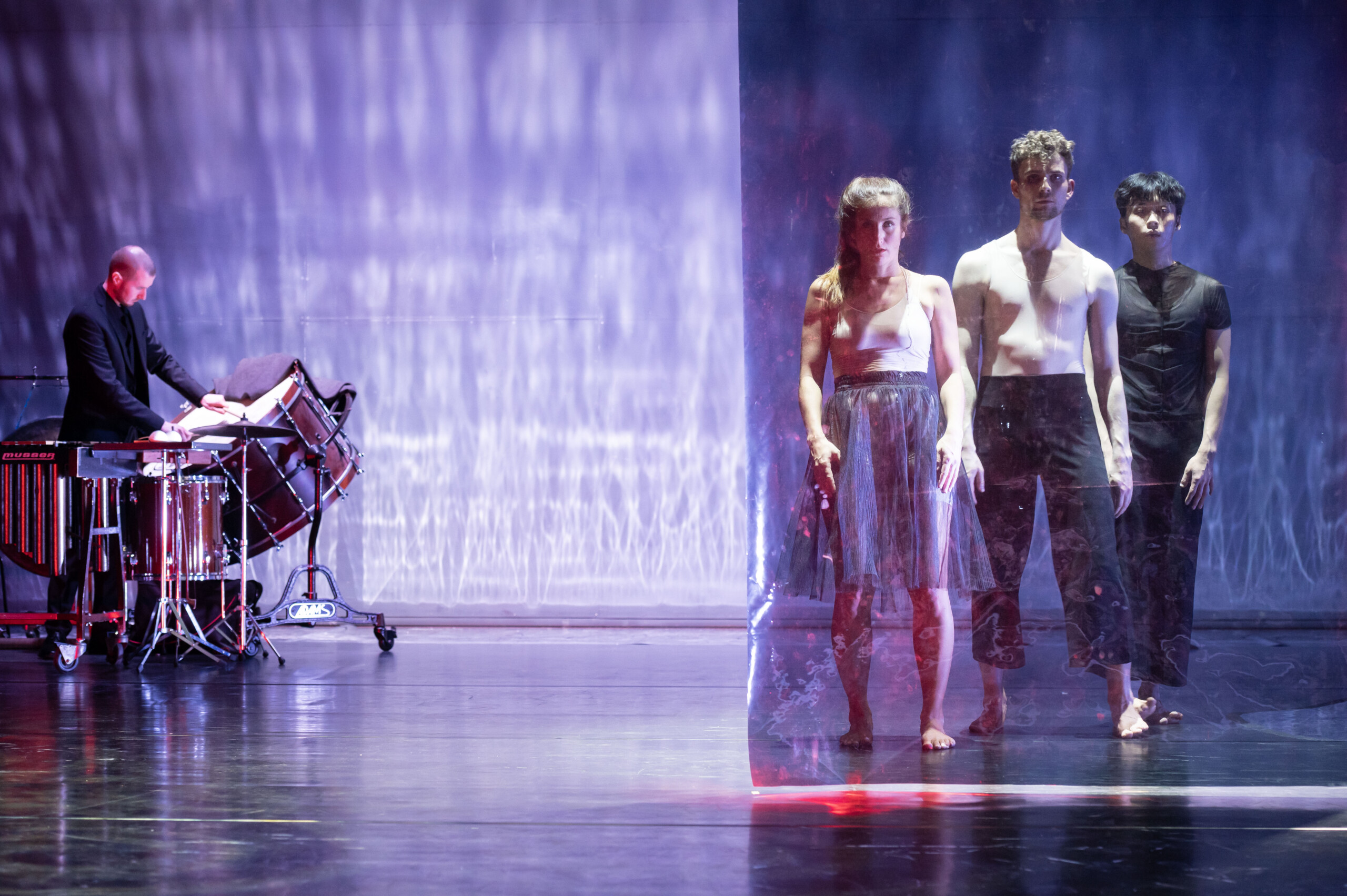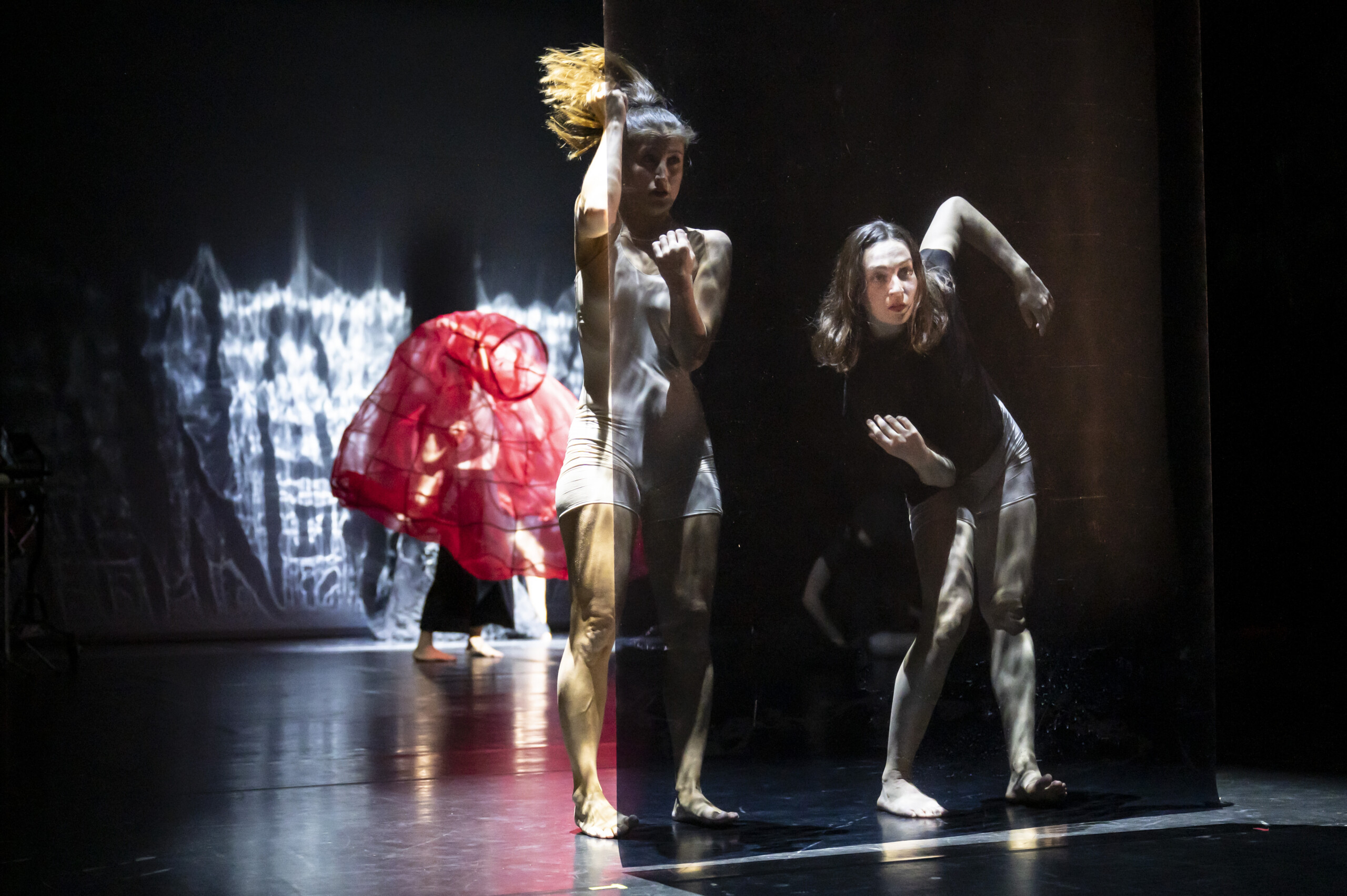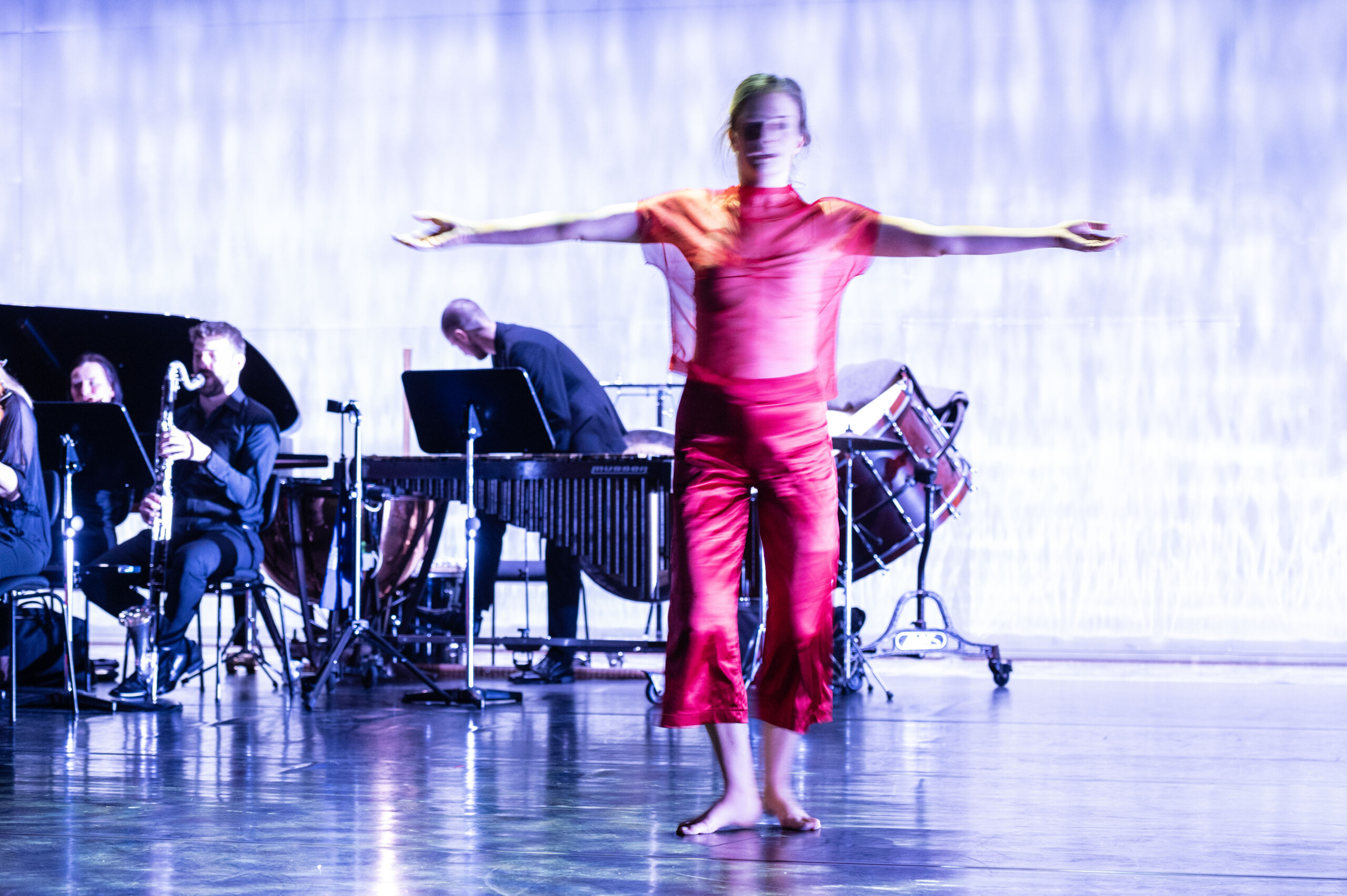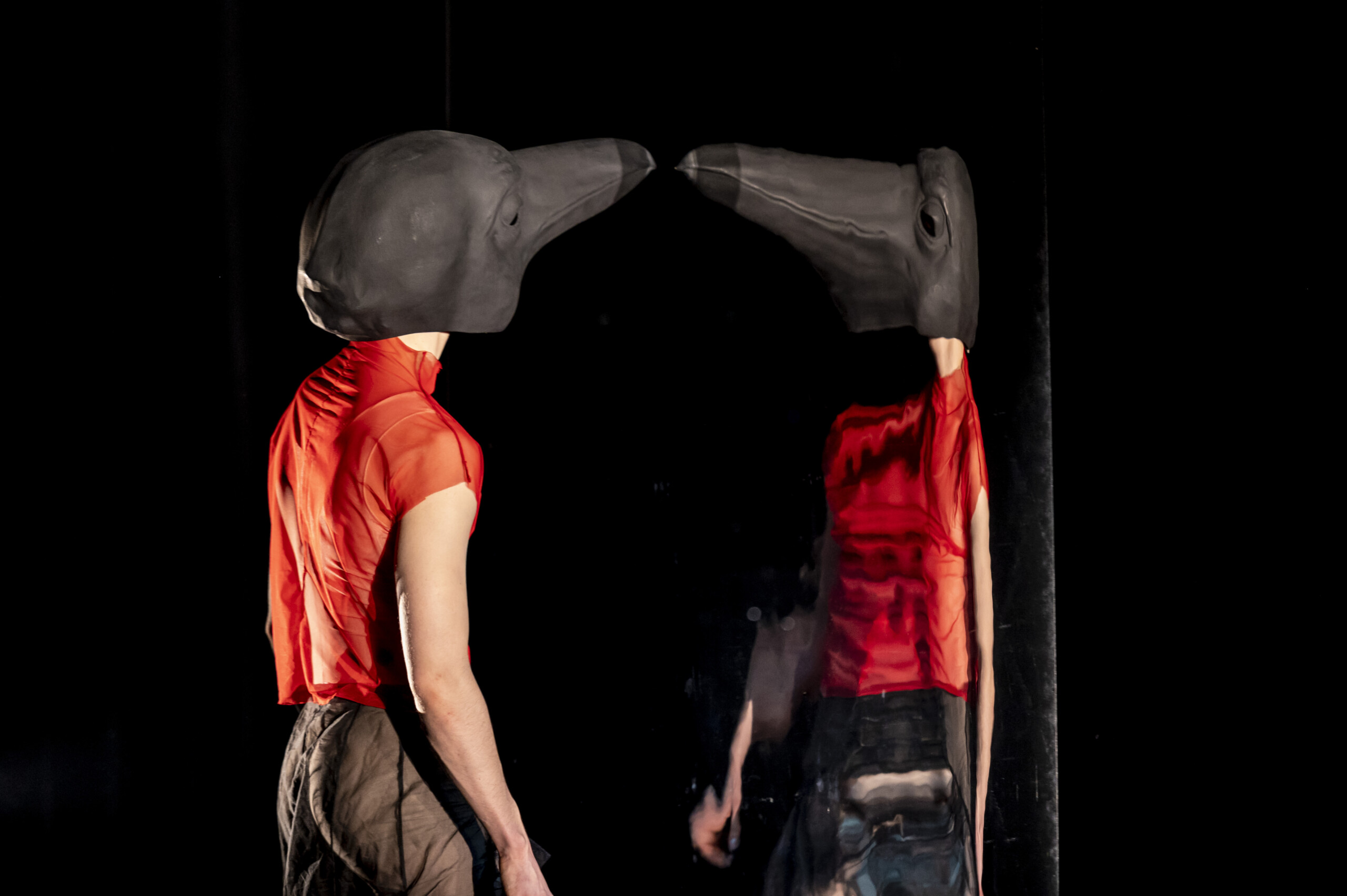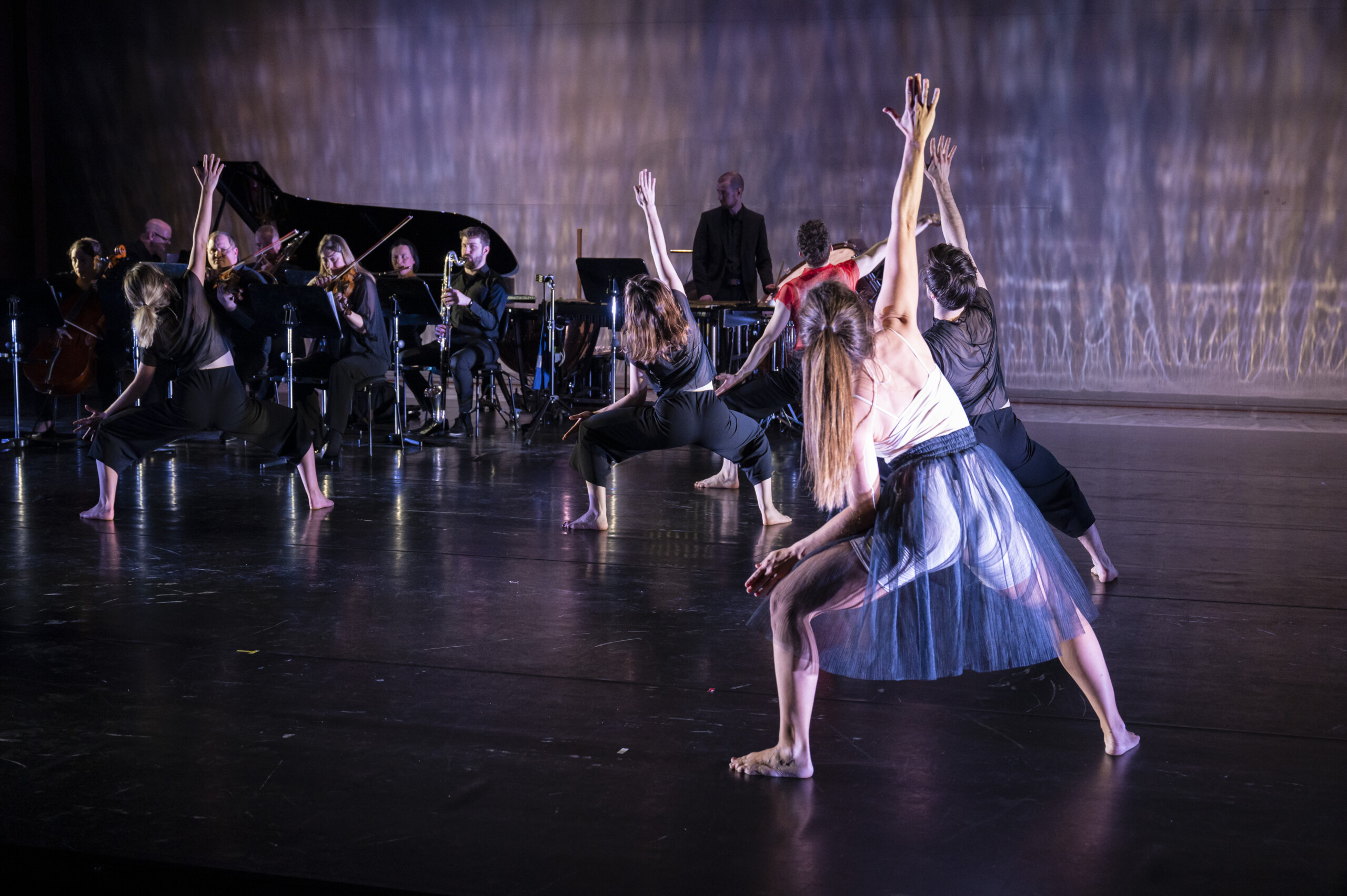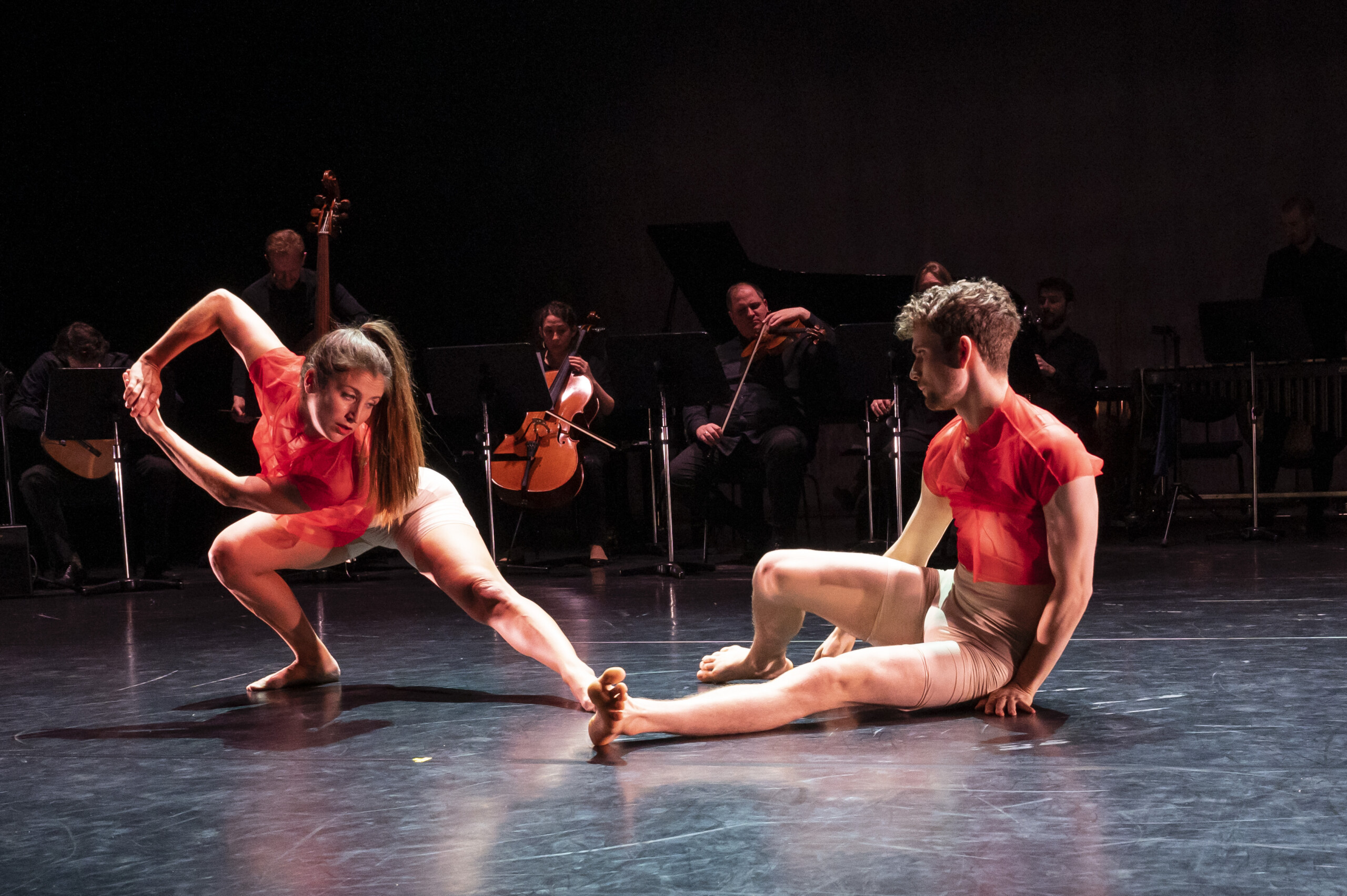SOLSTICES von Georg Friedrich Haas
Ein Tanztheaterprojekt zu einer Komposition von Georg Friedrich Haas
Eine Koproduktion von walktanztheater.com und Ensemble plus
In seinem 2018 komponierten Werk „Solstices“ – gewidmet seiner Frau Mollena Lee Williams-Haas – führt Georg Friedrich Haas seine in den Kompositionen „Adolf Wölfli“, „in vain“ und „Koma“ – neben „Thomas“ und „Bluthaus“ der dritten Oper der Schwetzinger Trilogie – sowie in seinem 3. Streichquartett begonnene Auseinandersetzung mit den vielfältigen, überraschenden Facetten des Musizierens und gemeinsamen Musikerlebens im Dunkeln fort. Dunkelheit ist in diesem 75-minütigen Stück keine momenthafte Abwesenheit von Licht, sondern wird zu einem zentralen Moment der Komposition und macht so intensive Hörerfahrungen sowie Sinnesabenteuer möglich.
Dieses Werk wurde bislang weltweit fünf Mal aufgeführt und ist nun als Tanzprojekt für die Kooperation von walktanztheater.com und Ensemble plus eingerichtet. Die Premiere in Dornbirn / Kulturhaus am 16.2.2022 zeigt diese Komposition erstmals in Österreich und ist eine Würdigung des Komponisten aus Vorarlberg zu seinem 70.Geburtstag.
‚Solstices‘ in der Aufführung von walktanztheater.com mit dem ensemble plus ist eine Auseinandersetzung mit Körper und Musik, mit Raum und Emotion, mit den Elementen von Dunkelheit und Licht, von Finsternis und Helligkeit. Das Ensemble plus studiert einige Passagen als im Dunkel zu spielende Musik ein, der Tanz wird mit sehr grellem, sehr reduziertem oder gänzlich verschwundenem Licht inszeniert.
Das in London ansässige Ensemble Riot, das 2020 den Ernst von Siemens-Ensemblepreis erhalten und zahlreiche innovative Konzertformate in den letzten Jahren realisiert hat, hat „Solstices“ 2019 im Nordic House in Reykjavik uraufgeführt. Es brachte das Stück im Rahmen des neuen Festivals der Bayerischen Staatsoper „Ja, Mai“ auch in München im Juni 2022 auf die Bühne.
Die Werke von Georg Friedrich Haas werden leider in Vorarlberg nur selten gespielt, bei den Bregenzer Festspielen waren die Kompositionen vor über 20 Jahren noch stark präsent.
1998 fand die szenische Uraufführung von Georg Friedrich Haas‘ Oper Nacht auf der Werkstattbühne statt.
Interview RIOT-ENSEMBLE mit Georg-Friedrich-Haas zur Uraufführung von SOLSTICES 2019 / Auszüge
Tim Rutherford-Johnson: When did you start to think about using darkness in your work? What was the inspiration?
Georg Friedrich Haas: The first time I composed darkness was in my short opera Adolf Wölfli, which I wrote in 1981. Wölfli was an amazing painter, who lived in the first third of the twentieth century. He was mentally ill, and in addition to his paintings he wrote terrible, dark texts. These texts are mostly about the impossibility of grace and forgiveness. At the opera’s end it should be completely dark – only flashes of light direct the orchestra. The singer quotes the Holy Bible: ‘Fear not: for, behold, I quotes the Holy Bible: ‘Fear not: for, behold, I bring you good tidings of great joy’ – repeated several times again and again to make it clear that this ‘great joy’ will never happen. Never. The stage director, a third class loyal citizen of the communistic German Democratic Republic, ignored and destroyed these ideas. He called me a ‘dilettante’ – and unfortunately I believed him to be right. Eighteen years later I met the German stage director Bettina Wackernagel. We never had the chance to work together, but she explained to me that these ideas of mine were very dramatic and intense. I had just been working on in vain. I decided to compose darkness within this piece. It worked.
TRJ: What does darkness symbolize for you? What is its role in your music?
GFH: What does the sound of a violin’s string symbolize in my music? What does a C sharp symbolize? They symbolize nothing. They are musical means, musical media, which can be used for any expression. It depends on the surroundings, on the musical grammar and surroundings, on the musical grammar and musical logic before and after this musical element.
TRJ: Has that role changed, or its symbolism developed? I’m thinking of, for example, the different meanings of darkness in your third string quartet (the Holy Week Tenebrae service) and in vain (the return of fascism to European politics). In what ways does darkness continue to excite you as an idea? What other themes might be explored through it?
GFH: The darkness of in vain does not symbolize fascism. I am not able and not willing to write a music that could symbolize this. The dark moments in in vain may symbolize my fear and my desperation regarding the upcoming of a new fascism. But in these dark elements I also compose the utopia of a music that can only be performed by musicians who possess a high level of responsibility. Who completely trust their individual musical imaginations. And who do not need any director or conductor to create their sounds. The darkness in my opera die schöne Wunde and in my piece wohin bist du gegangen? symbolizes erotic despair. The darkness in my opera KOMA symbolizes the world of a patient in a hospital, being in a coma. In my Ninth and Tenth String Quartets – and in the new piece for the Riot Ensemble – the darkness does not have any meaning. It is just a musical medium. I hope it is a beautiful one.
TRJ: Writing for performers to play in the dark, and from memory, is obviously very challenging. What techniques have you developed to help you achieve this?
GFH: There are no ‘techniques’. I just have to describe the musical units as plainly as possible.
TRJ: This has been an interest in your work for several years now, so presumably it has unlocked something valuable for you compositionally. I wonder if you could describe this: are there particular ideas, ways of working, musical forms and so on that you couldn’t have discovered without setting up these challenges?
GFH: In my Third String Quartet I composed social procedures: I asked the musicians to perform ‘invitations’. If these invitations are accepted by at least one other musician, a (verbally notated) musical development is to be performed. There are also some additional formal instructions. Within my Ninth and Tenth String Quartets the musicians also play ‘games’ – a system of clearly defined rules about how to ‘fight’ against one the other. This is fun for the musicians and the result is a music that reflects this verve. In the Ninth String Quartet I also ask the musicians to find very precise microtonal tunings. The process of searching for and finding these harmonies creates the music.
LINK TO Interview Riot Ensemble mit Georg Friedrich Haas 2018
LINK TO Reaction-Article by James Hardie February 1, 2019
LINK TO The Rambler-Tim Rutherford-Johnson on Solstices 2021
Premiere am 16.2.2023 um 19.30 Uhr
Vorstellungen am 17.2. / 18.2. / 21.2./ 22.2.2023 jeweils um 19.30 Uhr
Matinee-Vorstellung am 19.2.23 um 10.00 Uhr
Kulturhaus Dornbirn
TICKETS https://www.dornbirn.info/de und bei Botta Lustenau, Hohenems Tourismus, Bregenz Tourismus
Inszenierung Brigitte Walk
Choreographisches Konzept Elisabeth Orlowsky
Choreographie Ensemble
Ausstattung Sandra Münchow
Tanz Miriam Arnold, Sebastien Kapps, Joni Österlund, Marina Rützler, Silvia Salzmann, Chris Yi-Yi Wang
Musik Ensemble plus / Michaela Girardi, Violine | Guy Speyers, Viola | Myriam García Fidalgo, Violoncello | Nikolaus Feinig, Kontrabass | Anja Nowotny-Baldauf, Querflöte | Hauke Kohlmorgen, Klarinette | Thomas Gertner, Posaune | Martin Gallez, Klavier | Benjamin Kuhn, Gitarre | Bertram Brugger, Schlagzeug
Lichtdesign Matthias Zuggal
Maske Saskia Wiedl
Inspizienz Matthias Seewald
Produktionsleitung Nicole Wehinger
Design sägenvier designkommunikation
Pressearbeit Pzwei
Georg Friedrich Haas (*1953 in Graz) arbeitet seit Herbst 2016 mit Ricordi Berlin zusammen. Er unterrichtete an der Kunstuniversität in Graz (zuletzt als »außerordentlicher Universitätsprofessor«) und an der Musikakademie in Basel. 2013 wurde er als Professor of Music an die Columbia University in New York berufen und lehrt seitdem dort Komposition. Haas fühlt sich einerseits in der europäischen Tradition verwurzelt und ist andererseits stark von der ästhetischen Freiheit amerikanischer Komponisten wie Charles Ives, Harry Partch, John Cage und James Tenney beeinflusst. Immer wieder verweist er zudem auf die Klangmystiken der Komponisten Giacinto Scelsi und Ivan Wyschnegradsky. In einer im Januar 2017 von der italienischen Musikzeitschrift Classic Voice veröffentlichten Umfrage unter einhundert namentlich genannten Fachleuten nach »le musiche più belle dal 2000 al oggi« belegte Haas mit großem Abstand den ersten Platz. Sein umfangreiches Schaffen mit einer Vielzahl von Werken für großes Orchester, für Kammerorchester, Instrumentalkonzerten, acht Opern, zehn Streichquartetten, vielfältiger Kammermusik, Vokalwerken etc. verbreitet sich kontinuierlich weltweit – nicht nur in Spezialveranstaltungen für neue Musik, seine Kompositionen erreichen auch ein traditionell geschultes Publikum. Haas hat seine Arbeit der (in hundertprozentiger Vollkommenheit unerfüllbaren) Utopie verschrieben, eine neue Musik zu schaffen, die gleichzeitig expressiv und wohltönend ist – nicht obwohl, sondern weil sie neu ist.



